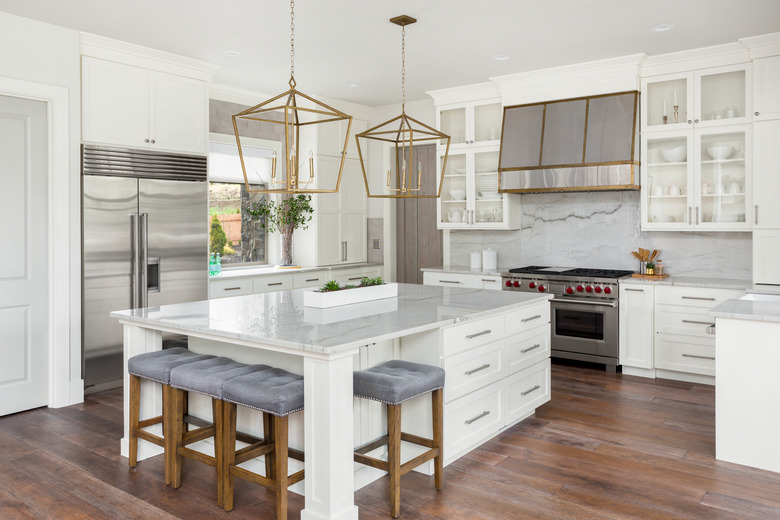How To Use Epoxy Floor Coatings On Linoleum
Putting epoxy floor over linoleum is relatively easy, and you most likely won't need to hire a professional to do it. You may only need to hire a professional depending on the state of your floors. If your floors are in good condition, then all you need are the right tools to get the job done.
What Is Epoxy?
What Is Epoxy?
According to Performance Industrial, epoxy flooring is an adhesive, plastic or other material that is made from synthetic thermosetting polymers. Epoxy combines resin and hardeners that are mixed. When they chemically react, they form a rigid plastic material. This creates a strong, durable and resistant material that bonds to a majority of base layers. Epoxy isn't like the paint you'd typically use. Instead, epoxy is a solution that bonds to a surface.
According to Performance Industrial, epoxy floors are usually found in industrial environments, hospitals or sports facilities because they are so strong and durable. Epoxy can not only withstand heavy traffic, but it resists oil stains and water, can be combined with paint to mask chips and cracks and is pretty easy to clean as well.
Epoxy floor over linoleum should last around two to three years, depending on the amount of traffic, according to Armour Flooring. If you want to maintain the longevity of epoxy on linoleum coating, then you should sweep it multiple times a week and clean it with a mild scrubber at least once a month. Recoat the floor as well if necessary.
Epoxy Floor Over Linoleum
Epoxy Floor Over Linoleum
When putting an epoxy floor over linoleum, you shouldn't have to tear up the current flooring as long as the floor is safely attached to the concrete. Before you apply the epoxy, you need to access the condition of your floor. Any scratches or damage that you see need to be fixed before using the epoxy. If your floor isn't damaged, then you can go ahead and clean the floor in preparation for the epoxy.
You must clean the floors with a good quality brush and cleaner because you need to get rid of any grease or grime that is on the floor. Linoleum has a waxy surface, so after you clean the floor, use a wax stripper to get rid of the protective wax layer and then sand the floor to create a rough surface. You don't want any wax or anything else that can hinder the epoxy from bonding to the floor.
When the floor is clean, apply the primer. You must use a couple of coats to create a smooth surface for the linoleum. After the primer is painted on, you're going to apply the epoxy coating. A roller works best when putting the epoxy floor over linoleum.
Cleaning Epoxy Floors
Cleaning Epoxy Floors
Maintaining the longevity of epoxy floors comes down to making sure your floor is dusted. Dust and dirt will damage epoxy floors, so you should try and dust your floors often. In addition to dusting your floors with a dust mop, you also need to wet mop your epoxy floors. Never use bleach, even when trying to get up difficult stains.
Instead, mop your epoxy floors with an ammonia and water solution. All you have to do is combine 1/2 cup of ammonia to 1 gallon of hot water. If you don't have ammonia, combine one part Windex to three parts water. Besides bleach, don't use cleaners with citrus or vinegar-based cleaners because the acid will destroy the gloss on the floor.
